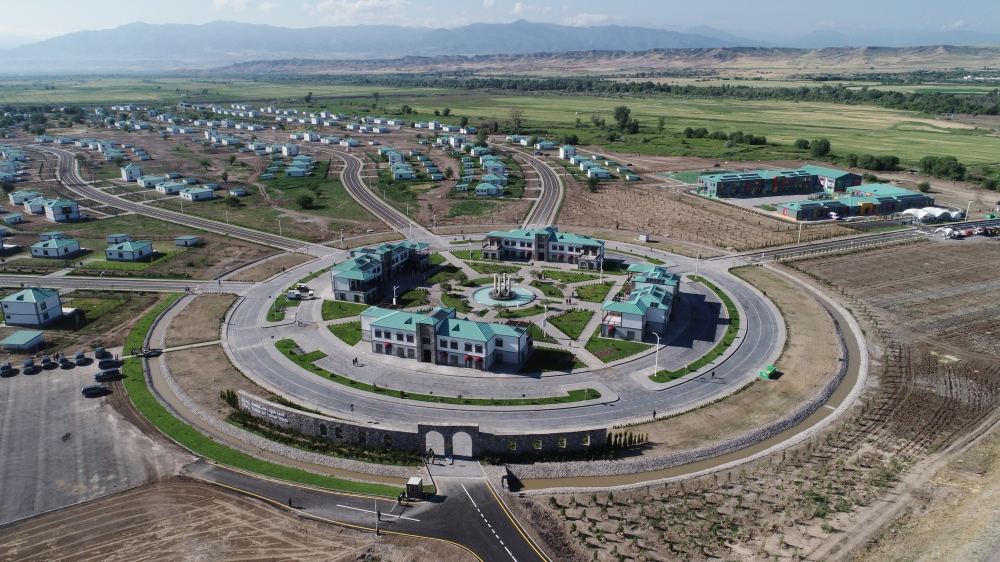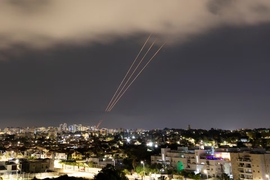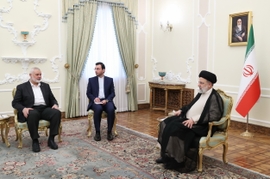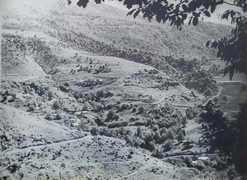The authorities of Azerbaijan have revealed the total number of internally displaced persons to be returned until 2026 to the Zangilan district liberated from the Armenian occupation.
“In accordance with the ‘Great Return’ strategy for 2022-2026, we plan to return about 16,000 people to different settlements of the Zangilan district. One of them is the city of Zangilan,” Vahid Hajiyev, a special representative of the Azerbaijani president in the liberated Zangilan district, according to local media.
“President Ilham Aliyev has already laid the foundation for a residential complex in the city of Zangilan. Now a lot of work is being done in this direction.”
The first group of Azerbaijani citizens returned to their homes this July. Within the “Great Return” state program, ten families comprising 58 people arrived in the Aghali village of the Zangilan district to settle in their new houses. In September, more families were returned to Aghali. The next group of Aghali residents will be brought to their homes by the end of this year.
According to census data, 1,508 people have been registered in the Aghali village of which 1,350 will return back to their homes. Before occupation in 1993, this administrative area was comprised of three villages. During the pre-occupation period, 40 families lived in the First Aghali village, 60 families in the Second Aghali, and 161 families in the Third Aghali.
Meanwhile, Hajiyev said other villages in Zangilan are also being prepared for the return of their residents.
“The groundbreaking ceremony [in the villages] has yet to take place. But I can say that work on the design of at least two villages has already been completed and detailed plans have been prepared. This is a very complex process because we are meticulous about detailed plans and master plans. The more time given to planning, the easier it will be to build villages. Planning of the next villages is carried out in Zangilan, Jabrayil, and Gubadli,” he said.
The return of the Azerbaijanis to the liberated Aghali village followed the reconstruction and creation of all necessary infrastructure launched by President Ilham Aliyev in April 2021.
Aghali was the first village in those territories developed based on a “smart village” concept. The village is home to 150 two-story and three-story eco-friendly residential buildings, as well as a kindergarten, a school, a medical center, a hydroelectric power plant, and more. Five key components of development are being applied in Aghali: housing, production, social services, smart agriculture, and alternative energy. The “smart agriculture” concept in the Aghali village is expected to foster innovation within Azerbaijan’s agriculture sector.
At the same time, the offices of Azerpost, ASAN Service multi-purpose social services center, DOST social support center, and Center for Development of Small and Medium Enterprises have come online in the village. Residents of Aghali will receive more than 100 services concerning social security and employment in an online format.
During Turkish President Recep Tayyip Erdogan’s visit to Zangilan in October, the ground was broken for a smart agricultural complex, dubbed Dost (Friend) Agropark, in Aghali. A cutting-edge international airport was also put into operation in Zangilan by President Aliyev and his Turkish counterpart Erdogan.
The Azerbaijani government green-lit the “Great Return” program after liberating the country’s territories in a 44-day war with Armenia in 2020.
Armenia and Azerbaijan had long been at odds over the latter’s Karabakh (Garabagh) region. Following the Soviet Union’s dissolution in 1991, Armenia launched a military campaign against Azerbaijan that lasted until a ceasefire deal was reached in 1994. As a result, Armenia occupied 20 percent of Azerbaijan’s internationally recognized territories. Over 30,000 ethnic Azerbaijanis were killed, and one million were expelled from those lands in a brutal ethnic cleansing campaign carried out by Armenia.
Zangilan was occupied by the Armenian forces in 1993, which led to the forcible expulsion of over 34,000 people living there. The district was completely razed to the ground during the decades of occupation.
On September 27, 2020, the decades-old conflict between the two countries spiraled after Armenia’s forces deployed in occupied Azerbaijani lands shelled military positions and civilian settlements of Azerbaijan. During counter-attack operations, Azerbaijani forces liberated over 300 settlements, including the cities of Jabrayil, Fuzuli, Zangilan, Gubadli, and Shusha, from a nearly 30-year-long illegal Armenian occupation. The war ended in a tripartite statement signed on November 10, 2020, by Armenia, Azerbaijan, and Russia. Under the statement, Armenia also returned the occupied Aghdam, Kalbajar, and Lachin districts to Azerbaijan.
Shortly after the war, the Azerbaijani government launched major infrastructure projects to restore and reconstruct war-torn lands, including Zangilan.







 Iran's senior military leaders described the drone and missile attack on Israel on April 14 night as “successful".
Iran's senior military leaders described the drone and missile attack on Israel on April 14 night as “successful".
 Iran's President Ebrahim Raisi extended condolences to the Chairman of the Political Bureau of the Palestinian Hamas group, Ismail Haniyeh, followi...
Iran's President Ebrahim Raisi extended condolences to the Chairman of the Political Bureau of the Palestinian Hamas group, Ismail Haniyeh, followi...
 The number of evacuees from flooded areas in Kazakhstan has reached 97,852 people, including about 32,856 children since March 27.
The number of evacuees from flooded areas in Kazakhstan has reached 97,852 people, including about 32,856 children since March 27.



